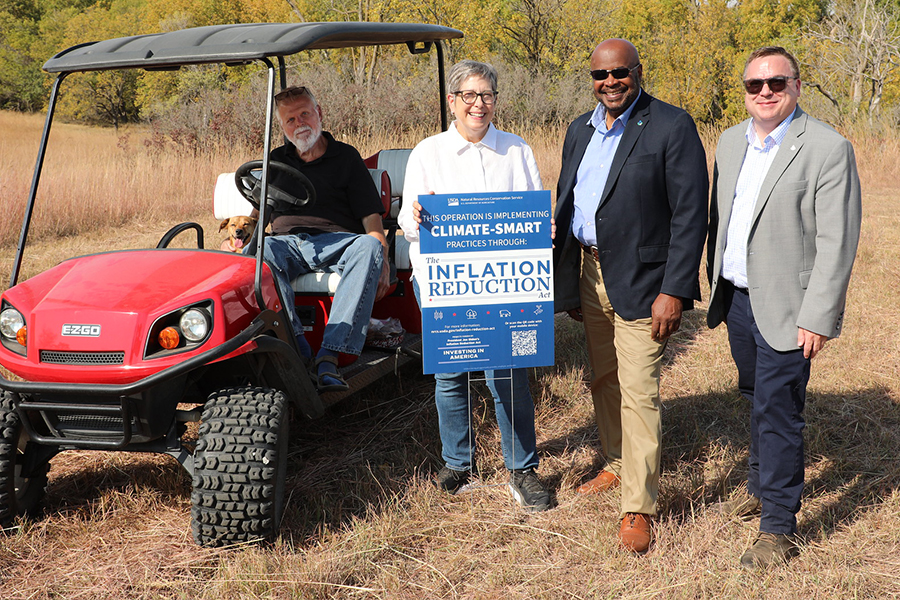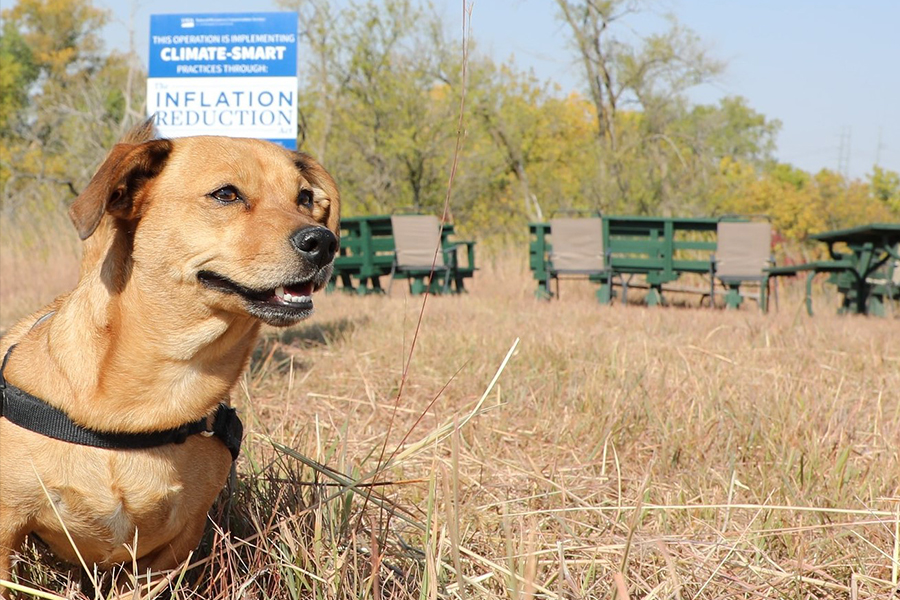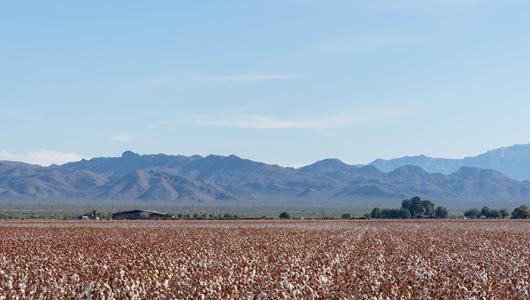In January 2024, Jon and Bill Oberg and family placed their 75-acre property in a conservation easement with USDA’s Natural Resources Conservation Service (NRCS) through a partnership with the Lower Platte South Natural Resources District. NRCS purchased the easement through its Agricultural Conservation Easement Program - Agricultural Land Easement (ACEP-ALE) with Inflation Reduction Act funding.
The Inflation Reduction Act provides an additional $19.5 billion for NRCS to deliver financial and technical assistance to producers through existing USDA conservation programs. When applied appropriately, these activities are expected to reduce greenhouse gas emissions or increase carbon sequestration.
ACEP-ALE helps landowners and other eligible entities conserve, restore, and protect wetlands, productive agricultural lands, and grasslands at risk of conversion to non-grassland uses.

Jon and Bill’s property is close to Lincoln, Nebraska, and lies a quarter of a mile from Nine Mile Prairie, a large, protected tract of virgin prairie owned by the University of Nebraska-Lincoln Foundation. Being close to Nine Mile Prairie, the conservation easement adds more land to the tallgrass ecoregion.
Jon and Bill purchased the property in the early 2010s from the Eager and Furrer families, who were key contributors to the history and development of the city of Lincoln and the state of Nebraska. Most of the property was previously terraced and farmed. In the early 1980s and 1990s, thousands of black walnut trees were planted to harvest walnuts or potentially harvest timber in the future. Since purchasing the land, Jon and Bill have strived to maintain the property in its native state.
This grassland is important because of its virgin prairie and proximity to Lincoln’s greenspace. Located within the tallgrass ecoregion, the property contains one of the most imperiled ecosystems in the world, according to the U.S. Geological Survey. The native prairie that is in the southeast corner of the property has remained unplowed since the early 1800s. Keeping grassland soils intact is critical to preserving their natural carbon storage, while also maintaining the other benefits grasslands provide.

The property contains a diverse suite of habitats from a riparian corridor, woodlands planted to black walnuts, virgin prairie, and wetlands. This diversity provides shelter, food, water, and space to several wildlife species including at-risk-species listed in the Nebraska Natural Legacy Plan. Tallgrass prairie once covered more than 170 million acres of the United States, from Indiana to Kansas and from Canada to Texas. Nearly all of it is gone, plowed under for agriculture or urban development, according to the National Park Service. Protecting the Oberg property with a conservation easement close to Nine Mile Prairie is essential to the preservation of the tallgrass ecoregion.
“Bill and I are both Prairie people. We grew up in Nebraska,” said Pat Leach, Oberg’s wife. “I would say that I think over the years often tallgrass Prairie wasn't valued like certain other kinds of landforms. And so, we are happy to do our part to preserve this.”
See also a Nebraska Public Media story featuring this easement project.
Heidi Brewer and Lori Valadez are public affairs specialists for NRCS.


